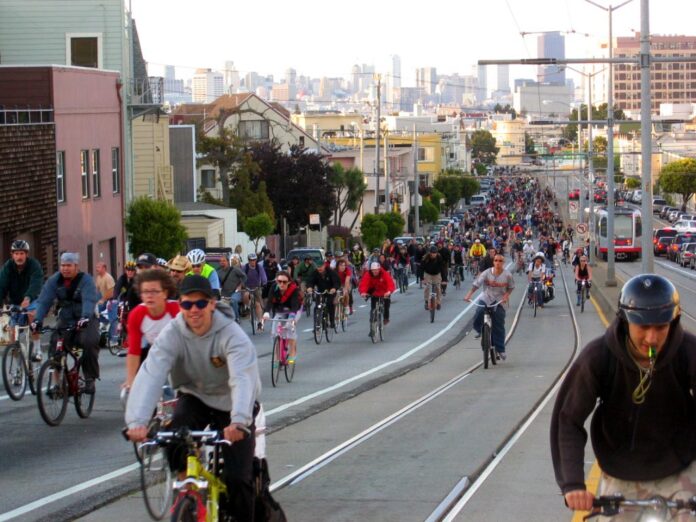
Source: Michael W. Parenteau / commons.wikimedia.org
Anyone who rides a bicycle in a big, dense city knows how much of a nightmare it is to navigate through the streets. Of course, the reason for this difficulty is all the traffic. The transit systems in most countries are very car-centric, leaving the majority of cities with too many cars on the road. Not only does this constant heavy vehicle traffic make it hard for cyclists to use the roads, but as a result they’re also less safe.
Here’s the main issue at hand: bicycles simply lack the mass to compete with cars on the road. The cyclist movement Critical Mass is trying to change that.
What is Critical Mass?
Is it a protest? Is it a social campaign? Sometimes it’s a bit challenging to try and define exactly what Critical Mass is. In a literal sense, however, Critical Mass is simply a group bike ride. It’s an event that takes place on the last Friday of every month in several cities around the world. At this time cyclists spontaneously ride together in their city streets. Anyone observing the discourse around Critical Mass recognizes, however, that it is in fact more than just a 'group bike ride.’
Critical Mass clearly means a lot more to the cyclist community. It serves as a way for cyclists to challenge the dominance of cars in ways they are incapable of doing individually. This was how the term 'critical mass’ was coined. It alludes to how the movement brings enough cyclists together that their presence becomes too significant to ignore. By having many cyclists ride together, Critical Mass makes things safer for cyclists since they are more visible. Not just that, by group riding it’s easier to navigate through the city since cars are more likely to give way.
Critical Mass can also be viewed as an important political statement by cyclists to amplify their often-overlooked road needs and to push for more inclusiveness in urban transportation. In addition to this, some view Critical Mass as a social advocacy movement for the adoption of bicycles as a sustainable means of transportation in cities. This ties into the broader discourse around sustainable living.
Clearly, there are many ways to look at the Critical Mass movement. However, the lack of a unified premise is more of a feature, not a bug. The movement lacks any centralized organization or hierarchy. In essence, it is not organized by any group of people, nor is it managed by anyone in particular. Cyclists simply gather together on a fixed day and time and ride together, often deciding the route spontaneously. Similarly, people can join and leave the group whenever they want. It, therefore, seems fitting that there isn’t any one motivation behind Critical Mass, as people may participate on behalf of whatever reason(s) resonate with them personally.
Understandably, not everyone has a favorable view of the movement. Some argue that the ride disrupts traffic and inconveniences other road users. This is especially noticeable since the event occurs on Fridays when many cities experience rush hour. However, this timing could be viewed as a strategic choice to get more visibility.
The Origin and Evolution of Critical Mass
Critical Mass started in the early 1990s in the city of San Francisco. A small group of cyclists wanted to challenge the dominance of cars on the city streets and promote cycling as a sustainable mode of transportation. The first organized ride took place on the last Friday of September 1992, when a group of about 50 cyclists gathered to ride together through the city. The event was originally known as Commute Clot, and its participants were mostly people who had received flyers on the street.
The motivation behind the inaugural ride was to reclaim public spaces and assert the rights of cyclists on the road. By riding in a large group, cyclists aimed to raise awareness among motorists and pedestrians about the presence and needs of cyclists.
Word about this novel form of cycling advocacy quickly spread, and Critical Mass rides started taking place in other cities across the United States and worldwide. The movement gained momentum, attracting more participants who believed in the idea of challenging car-centric urban planning and promoting alternative forms of transportation.
The Organizational Structure of Critical Mass
Arguably, the success of Critical Mass lies in its decentralized and organic nature. The movement has no formal organization or hierarchical leadership structure. Each ride is a self-organized event, with participants collectively determining the ride’s route, pace, and message. This lack of hierarchy allows Critical Mass to adapt and evolve based on the unique needs and circumstances of each city.
In addition, the lack of a formal organizational structure helps the movement avoid certain costs. The only thing required for an event to be held is a sufficient number of cyclists to reach the critical mass necessary for the safety of the ride. This is not to say the movement is completely disorganized. Some members are more active than others and, as expected, take up more responsibility, even if not in a formal sense. So, it’s not uncommon to find participants who prepare flyers for others to distribute or participants who help orient newcomers.
The Impact of Critical Mass on Cycling Culture and Urban Planning
Critical Mass events have had profound effects since their introduction in 1992. The changes brought about by this movement have been felt in the public perception of cycling and policymaking on urban design, as well as environmental sustainability.
One could argue that the chief impact of Critical Mass has been on cycling in various parts of the world. The movement has fostered a sense of community among cyclists, creating a network of like-minded individuals who share a passion for both cycling and advocacy. Through the monthly events, cyclists can connect and share experiences, build solidarity, and strengthen the overall cycling community.
Furthermore, Critical Mass helps expand the cycling community. By having many cyclists ride together and dominate the road, the movement has helped change the stereotype that cyclists are in the minority. In the same vein, it has altered the general public perception of cycling in a way that encourages more people to try the sport. Ultimately, as cycling has become increasingly accepted as a legitimate mode of transportation, this has influenced urban planning.
More policymakers and city officials are prioritizing cycling infrastructure in order to make cities more bicycle-friendly. There have also been more laws and regulations enacted to protect cyclist rights to ensure their safety. No doubt, this shift in government attitude can be credited, in part, to the pressure created through Critical Mass events.
The Participation in Critical Mass
Critical Mass events are open to everyone. Once you have a bike, a bottle of water to stay hydrated, and whatever other items you typically carry along on bike rides, you are all set. Critical Mass does not exist in every place; however, if you live in a major city, there is likely a recurring Critical Mass event you can join.
The event typically takes place on the last Friday of the month. However, the exact time and rendezvous location may be specific to one’s city. You can typically get this information from local sources or the internet. As of 2023, it was possible to participate in Critical Mass in many different cities and states, including Paris, Berlin, London, California, Florida, New York, São Paulo, New Delhi, and Seoul.
If your city does not have a Critical Mass event, you can take the initiative to start one. Since Critical Mass is not a centralized organization, anyone can start a Critical Mass event. To initiate one, you may need to collaborate with other cyclists in your city and print flyers to get others to join. It is typically a good idea to attach these flyers to peoples’ bikes and post them at local bike shops. In addition, it’s important to pick a landmark as a starting point. Remember to also learn the traffic laws and ride responsibly.
As a movement, Critical Mass has developed into a symbol of the potential power of collective action, demonstrating that cyclists can unite to demand safer roads, dedicated cycling infrastructure, and a shift toward sustainable transportation. By taking to the streets en masse, Critical Mass participants aim to disrupt the status quo and challenge the notion that cities are primarily designed for cars.
While the movement has faced a few challenges and controversies over the years, there is no denying its value. Critical Mass remains an important movement that continues to evolve and inspire change, leaving a lasting impact on the cycling culture and overall sustainability.
Critical Mass – Gallery

Source: b3k / commons.wikimedia.org

Source: KGyST / commons.wikimedia.org
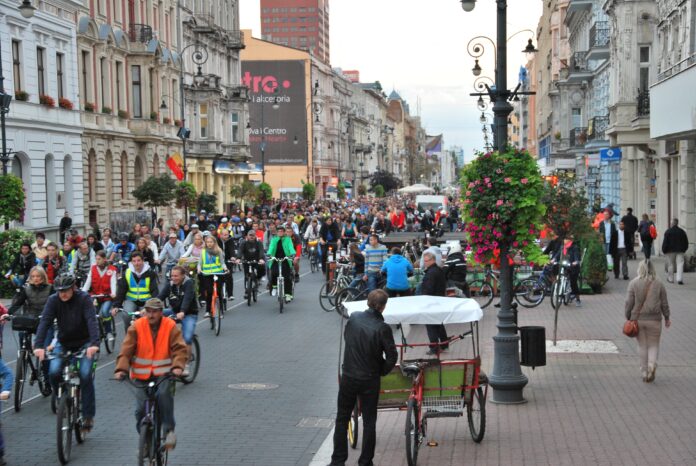
Source: Zorro2212 / commons.wikimedia.org
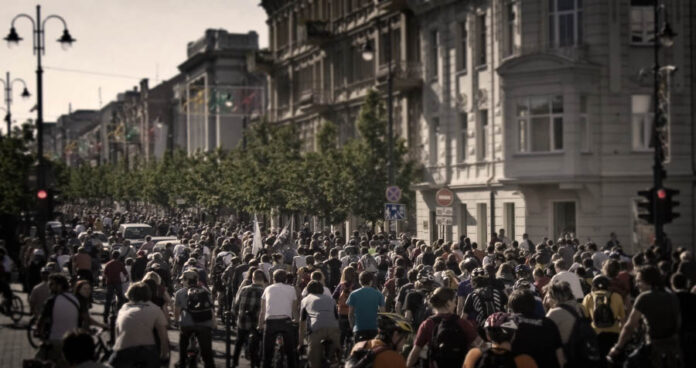
Source: Aurimas Rimša / commons.wikimedia.org
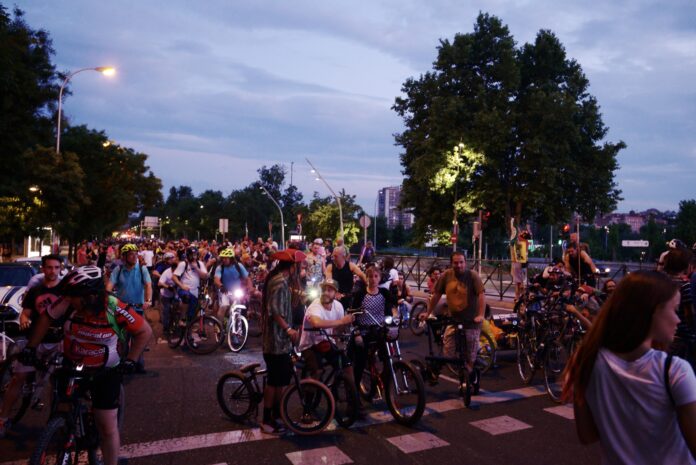
Source: Nicolas Vigier / commons.wikimedia.org

Source: Varsha.shakya / commons.wikimedia.org
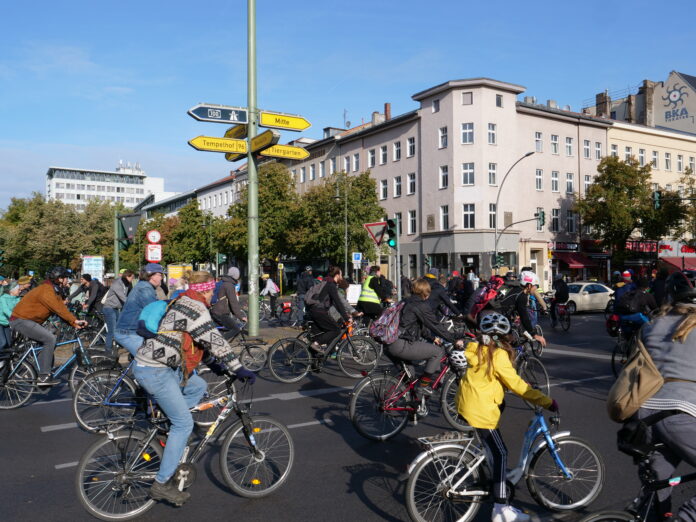
Source: Leonhard Lenz / commons.wikimedia.org
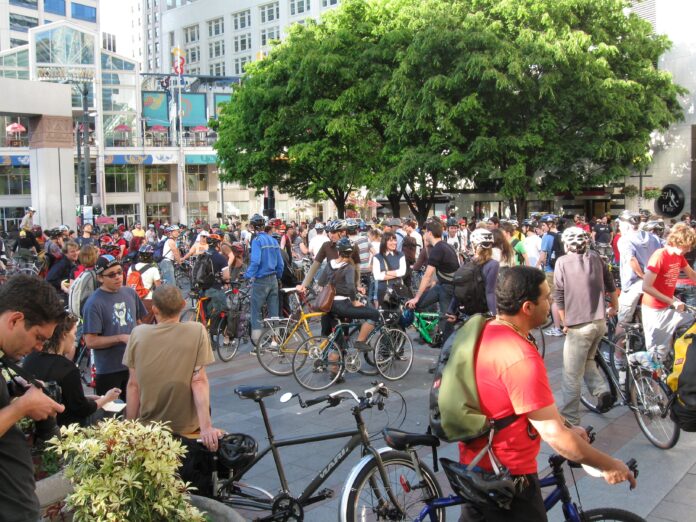
Source: Rootology / commons.wikimedia.org
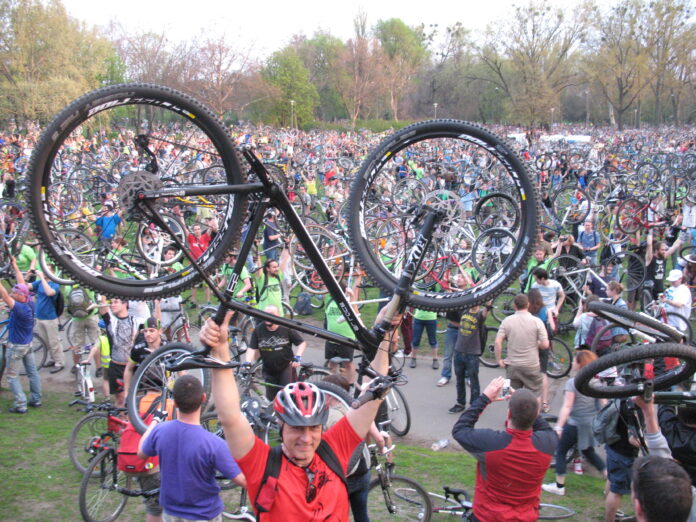
Source: JezW / commons.wikimedia.org